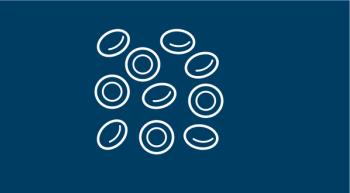
COVID-19 ‘Catapulted’ Us Into the World of Telehealth
The pandemic drastically increased the use of telehealth in cancer care. But even as COVID-19 restrictions are decreasing, virtual care is here to stay, says 1 nurse.
Years ago, Sharon Steingass, MSN, RN, AOCN, developed a nurse-led telephone triage unit at her institution, OSUCCC – James, to support patients with cancer and their caregivers. The phone-based program that was launched in 2017 became an invaluable asset when the COVID-19 pandemic struck in 2020 limiting access for physical visits with the oncology staff.
Steingass, administrative director for the James Cancer Network, recently discussed the importance of telehealth with Oncology Nursing News.
Oncology Nursing News: Can you give a brief overview of the telephone unit that you helped develop?
Steingass: I was challenged at the James to establish a nurse-led telephone triage department [which] was to operate outside of the normal business hours to support our oncology patients.
[I analyzed] standards of practice that are out there in order to design this unit. The unit was designed and implemented in February of 2017, it has continued to serve our patients really well, not only as they go through their cancer journey, but also as we experienced COVID-19 and the myriad of questions that came up during the pandemic.
Now the call center is going to be expanded to be hopefully 24/7. So during our business hours, we have a clinic-specific approach for the management of phone calls from patients, or virtual activities with patients. And we're going to move to a centralized approach. Mostly, I think, from an efficiency perspective, and also to help improve the experience that our patients and their caregivers are having.
What has the patient and caregiver experience been like with the telephone triage unit?
They appreciate talking to a nurse on the first point of contact. The nurses, because they have the knowledge and skills, can do an assessment of the patient over the phone, and then figure out what the best disposition of care will be for the patient. Sometimes the disposition is providing simple advice to the patient, [which] may be things like how to clarify taking their medications or how to manage a symptom that they're experiencing as a result of their treatment. Other times, they will need to escalate the issue, either to an on-call provider who may be able to write prescriptions or propose other interventions, or send the patient to urgent care or emergency care. So, the patient and the caregiver like the fact that they're talking to a licensed professional on the first point, and they're getting resolution to their issues as well.
Has the usage of the telephone triage increased since the start of the COVID-19 pandemic?
It increased for a variety of reasons. One, people were just demanding information. They were afraid. They weren't sure whether they should come for their appointments, do they delay their care, so there were a myriad of care coordination issues that came up with the pandemic.
And then the other thing was, we as every hospital did, limited or restricted caregivers from coming with patients. So there was increased traffic, both via the phone and other types of virtual environments where we needed to start connecting with patients and their family members, virtual eight to provide care. And I would say the hardest piece was not having families present to listen to discharge instructions or information about how patients were progressing for treatment was really, really challenging. The demand for that interaction increased during COVID-19. And it'll be interesting to see if it changes now that we're starting to allow some families to come and begin to participate in care.
Do you expect a decrease in telehealth now that COVID-19 restrictions are starting to wane?
I don't think so. I think we were catapulted — [that] would be the word I would use — into moving into virtual appointments with patients due to COVID-19, because we just needed to be able to continue to provide care. But now we're going to come back and relook at figuring out when is it appropriate to still see the patient in person, and what things can be done virtually.
I don't think [we] will completely go away from virtual [care] but we are going to clarify exactly what settings would be appropriate, and what settings are still best for a face-to-face appointment. And the other thing is, we gained tons of knowledge and skills on how to do a virtual appointment because of COVID-19. So both providers and patients gain those skills. And as we know, many patients have social determinants of care that impact their ability to have access. So can we continue to provide care for some patients who can't travel, or because a they don't have the resources or be physically they can't? So how can we provide care in a virtual environment for those things, where social determinants impact access?
Newsletter
Knowledge is power. Don’t miss the most recent breakthroughs in cancer care.
















































































